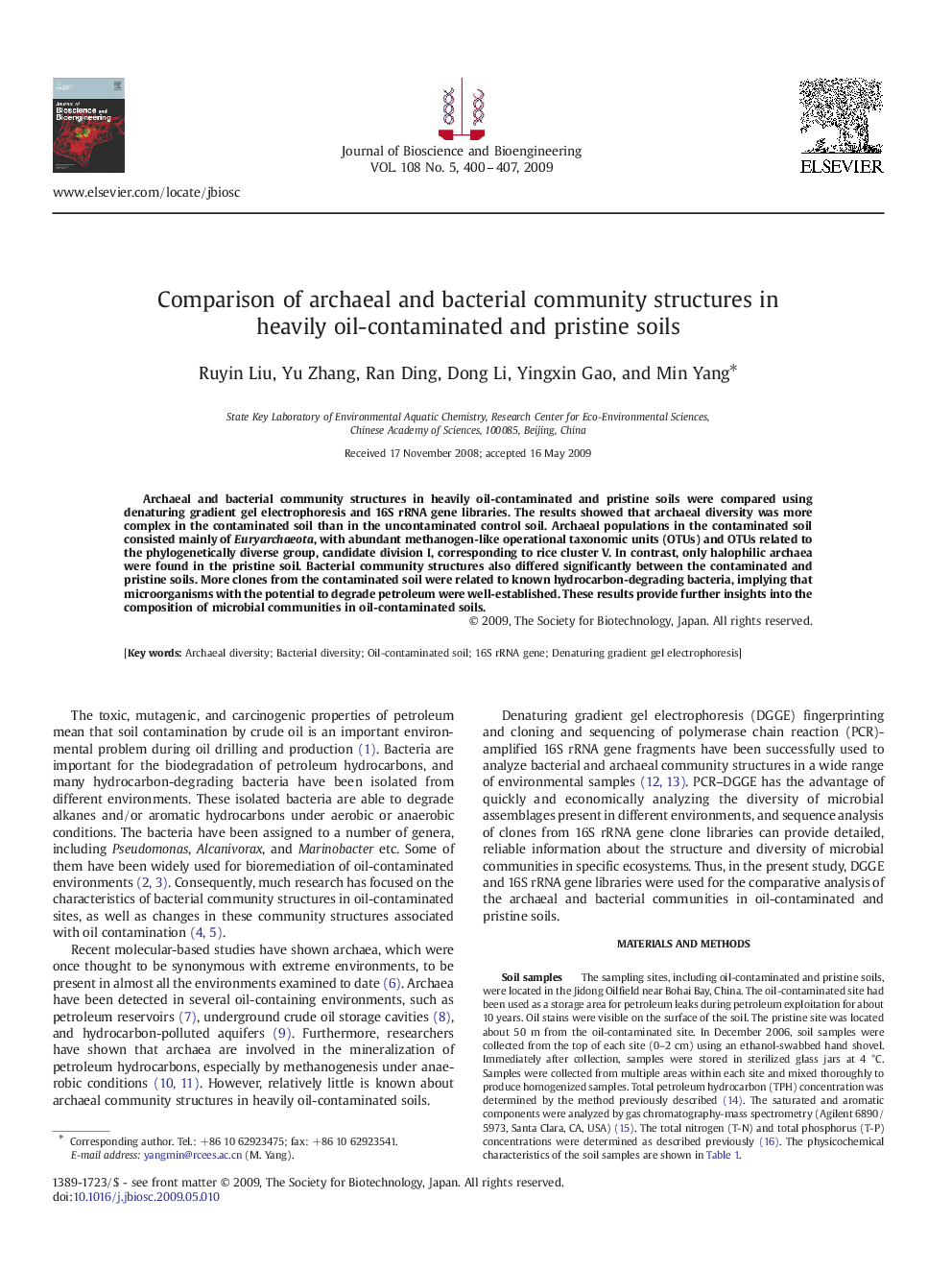| Article ID | Journal | Published Year | Pages | File Type |
|---|---|---|---|---|
| 21674 | Journal of Bioscience and Bioengineering | 2009 | 8 Pages |
Archaeal and bacterial community structures in heavily oil-contaminated and pristine soils were compared using denaturing gradient gel electrophoresis and 16S rRNA gene libraries. The results showed that archaeal diversity was more complex in the contaminated soil than in the uncontaminated control soil. Archaeal populations in the contaminated soil consisted mainly of Euryarchaeota, with abundant methanogen-like operational taxonomic units (OTUs) and OTUs related to the phylogenetically diverse group, candidate division I, corresponding to rice cluster V. In contrast, only halophilic archaea were found in the pristine soil. Bacterial community structures also differed significantly between the contaminated and pristine soils. More clones from the contaminated soil were related to known hydrocarbon-degrading bacteria, implying that microorganisms with the potential to degrade petroleum were well-established. These results provide further insights into the composition of microbial communities in oil-contaminated soils.
